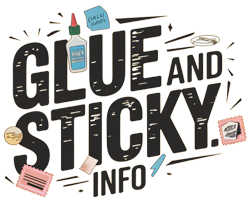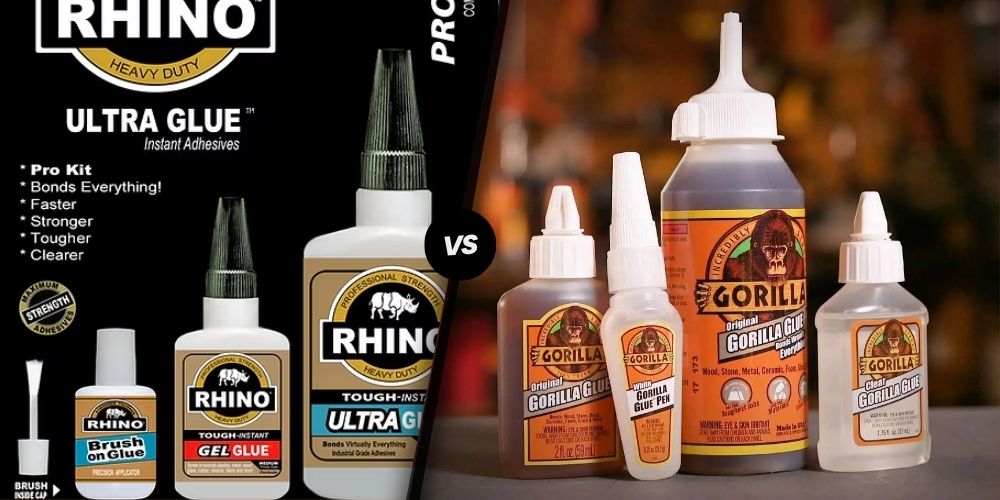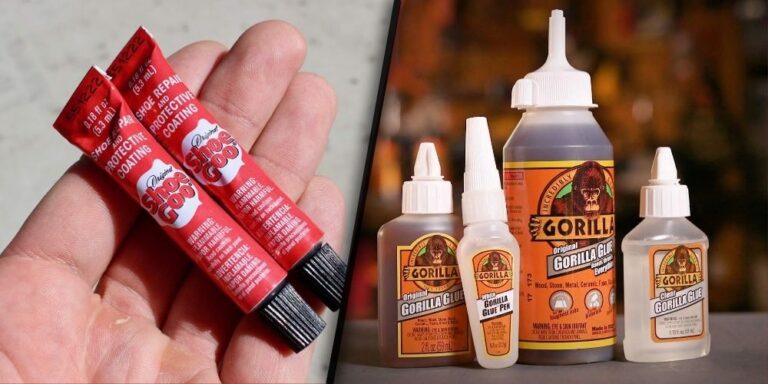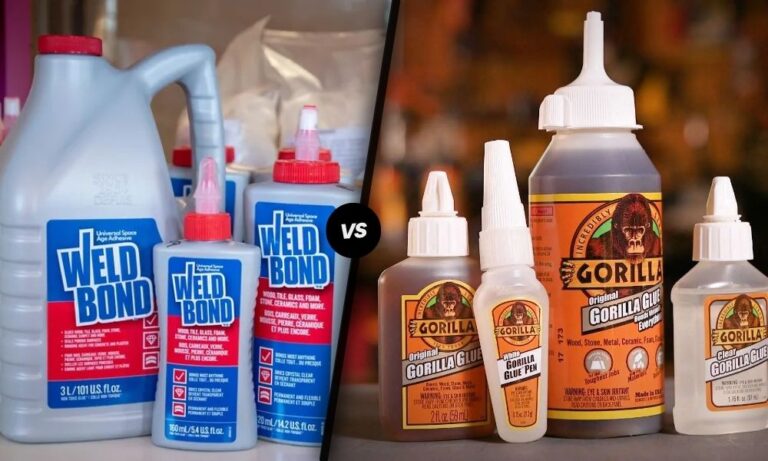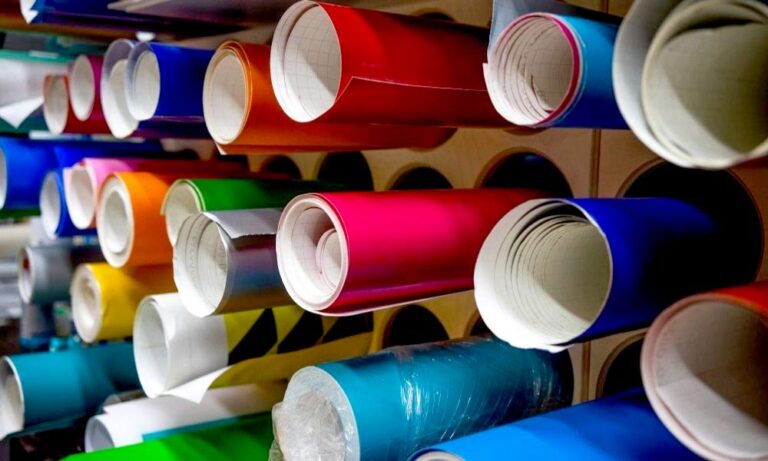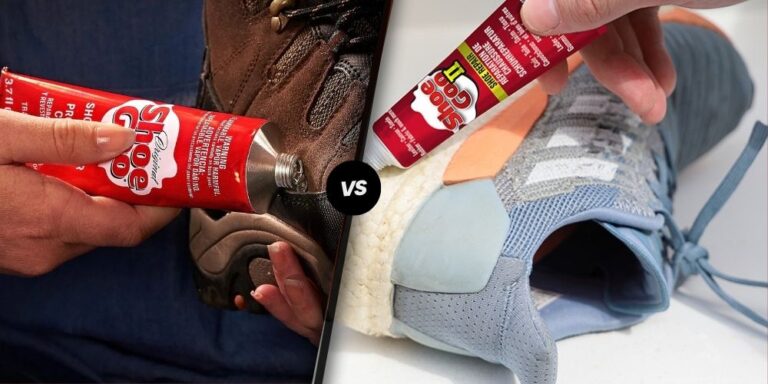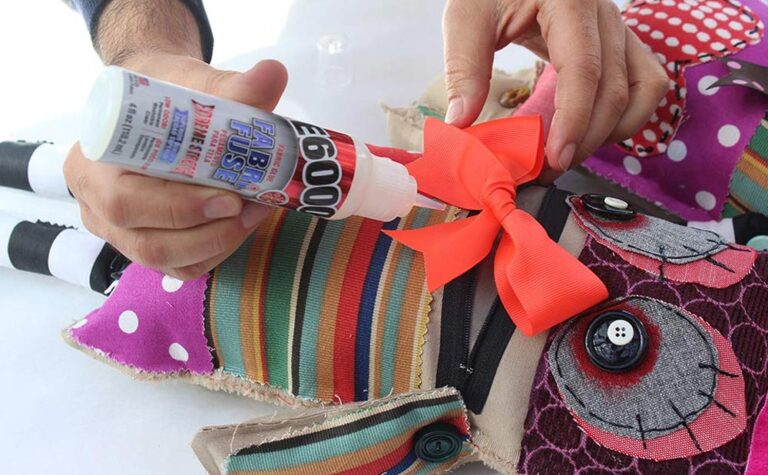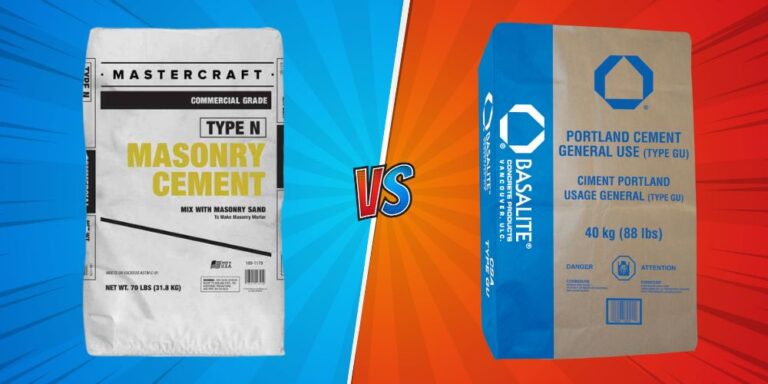Rhino Glue vs. Gorilla Glue: Which Holds Stronger?
Rhino Glue vs. Gorilla Glue: Which Holds Stronger?
When it comes to selecting a strong and versatile adhesive, Rhino Glue and Gorilla Glue are two of the most popular options available. Each product has unique properties, making them ideal for different applications. Whether you’re a professional contractor, hobbyist, or DIY enthusiast, choosing the right glue can significantly affect the success of your project. This detailed comparison will help you decide which adhesive holds stronger and is better suited for your needs.
What is Rhino Glue?
Rhino Glue is known for being a fast-acting, heavy-duty adhesive that can bond a wide range of materials. It is a cyanoacrylate-based glue, commonly referred to as a type of super glue, but designed to withstand harsher conditions. Rhino Glue’s most notable feature is its instant bonding strength, which eliminates the need for extended drying or clamping times.
Key Features of Rhino Glue:
- Versatile Application: Rhino Glue can adhere to plastics, metals, ceramics, rubber, wood, glass, fabric, and more.
- Fast Curing: The adhesive dries almost instantly, making it ideal for quick repairs.
- Clear Finish: It cures to a transparent finish, making it ideal for applications where a visible glue line would be undesirable.
- Durability: Rhino Glue is resistant to shock, vibration, moisture, and high temperatures, making it effective for both indoor and outdoor projects.
Due to these characteristics, Rhino Glue is often favored for precision tasks and repairs that require fast results.
What is Gorilla Glue?
Gorilla Glue, on the other hand, is a polyurethane-based adhesive designed for exceptional durability and gap-filling capabilities. It is one of the strongest adhesives available for porous materials like wood, and it works well on non-porous surfaces too.
Key Features of Gorilla Glue:
- Expanding Foam Formula: Gorilla Glue expands as it cures, filling in gaps and creating a stronger bond between materials.
- Longer Cure Time: The adhesive requires up to 24 hours to fully cure. While this may slow down some projects, the end result is a highly durable and waterproof bond.
- Material Compatibility: Gorilla Glue is effective on wood, metal, stone, ceramics, glass, and some types of plastic.
- Waterproof and Weatherproof: Once cured, the bond can withstand extreme temperatures, moisture, and UV exposure, making it a popular choice for outdoor projects.
However, Gorilla Glue’s expanding formula requires precise application to avoid excess foaming, which can affect the final appearance of the bond.
Key Differences Between Rhino Glue and Gorilla Glue
Understanding the main differences between these two adhesives is crucial when deciding which one to use. Below is a comparison of their key properties.
1. Composition and Bonding Mechanism
- Rhino Glue: Uses a cyanoacrylate formula that bonds instantly upon contact with moisture. It forms a quick, strong seal without the need for expansion.
- Gorilla Glue: Utilizes a polyurethane formula that activates with moisture. It expands during curing to create a strong, gap-filling bond.
2. Curing Time
- Rhino Glue: Cures almost instantly, making it perfect for quick fixes and small projects that require minimal downtime.
- Gorilla Glue: Requires 12 to 24 hours to fully cure. The longer curing time allows for a stronger, deeper bond but requires planning and clamping.
3. Application and Expansion
- Rhino Glue: Does not expand during curing. It applies in a liquid form that seeps into tight areas, offering precise control and minimal mess.
- Gorilla Glue: Expands significantly as it cures. This can be advantageous when working with uneven surfaces but may require cleanup and careful application.
4. Color After Curing
- Rhino Glue: Dries to a clear finish, making it ideal for applications where the glue should not be visible.
- Gorilla Glue: Dries to a brownish color, which can be noticeable on lighter-colored materials.
5. Strength and Durability
Both adhesives offer strong bonding capabilities, but their strength can vary based on the materials being used. For example:
- Rhino Glue: Often excels at bonding non-porous materials like metal, glass, and plastic.
- Gorilla Glue: Performs exceptionally well on porous materials like wood and stone, thanks to its expanding formula.
6. Water and Weather Resistance
- Rhino Glue: Provides good resistance to water, but may not be as effective in prolonged exposure to extreme weather conditions.
- Gorilla Glue: Fully waterproof and capable of withstanding extreme temperatures, making it more suitable for outdoor projects.
Which Glue Holds Stronger?
The strength of each adhesive depends on the type of material and application conditions. Below is an analysis based on common use cases:
For Non-Porous Materials (e.g., Metal, Glass, Plastic):
- Rhino Glue tends to hold stronger due to its cyanoacrylate formula, which creates a tight, instant seal without requiring moisture or expansion.
For Porous Materials (e.g., Wood, Stone):
- Gorilla Glue performs better due to its ability to expand and penetrate the pores of the material, resulting in a more durable bond.
For Precision Applications:
- Rhino Glue is preferable for projects that require quick fixes or minimal visibility of the adhesive. Its clear finish and instant curing make it ideal for delicate work.
For Heavy-Duty Outdoor Projects:
- Gorilla Glue is better suited for outdoor environments due to its superior waterproofing and resistance to temperature fluctuations.
Pros and Cons Summary
| Feature | Rhino Glue | Gorilla Glue |
|---|---|---|
| Composition | Cyanoacrylate | Polyurethane |
| Curing Time | Instant (seconds to minutes) | 12-24 hours |
| Expansion | No | Expands |
| Finish | Clear | Brown |
| Strength (Non-Porous) | Stronger | Good |
| Strength (Porous) | Good | Stronger |
| Water Resistance | Moderate | Waterproof |
| Best for Precision Work | Yes | No |
| Best for Outdoor Use | Moderate | Excellent |
When to Use Rhino Glue
Consider Rhino Glue if you:
- Need a fast-drying adhesive for quick repairs.
- Are working with non-porous materials such as plastic, glass, or metal.
- Want a clear finish with no visible adhesive lines.
Example Applications:
- Repairing a broken glass frame.
- Bonding metal parts for a small craft project.
- Fixing rubber seals or ceramic ornaments.
When to Use Gorilla Glue
Choose Gorilla Glue if you:
- Need a gap-filling adhesive for uneven surfaces.
- Are working with porous materials like wood, stone, or concrete.
- Require a weatherproof bond for outdoor projects.
Example Applications:
- Assembling wooden furniture or fencing.
- Bonding stone tiles in an outdoor area.
- Repairing ceramic planters exposed to the elements.
Tips for Application
Rhino Glue Application Tips:
- Clean the surfaces thoroughly before applying.
- Apply a small amount to one surface, as a little goes a long way.
- Hold or clamp the materials together for 30-60 seconds for best results.
Gorilla Glue Application Tips:
- Slightly moisten one of the surfaces to activate the glue.
- Apply sparingly to avoid excess expansion and foaming.
- Clamp or secure the materials for at least 1-2 hours. Allow 24 hours for full curing.
Conclusion
Both Rhino Glue and Gorilla Glue offer exceptional strength, but each is better suited to different applications. If you need instant bonding with a clear finish, Rhino Glue is the way to go. For projects that require gap-filling, long-term durability, and outdoor resilience, Gorilla Glue is the stronger choice.
Evaluate the materials and conditions of your project to select the right adhesive and ensure a strong, lasting bond.
